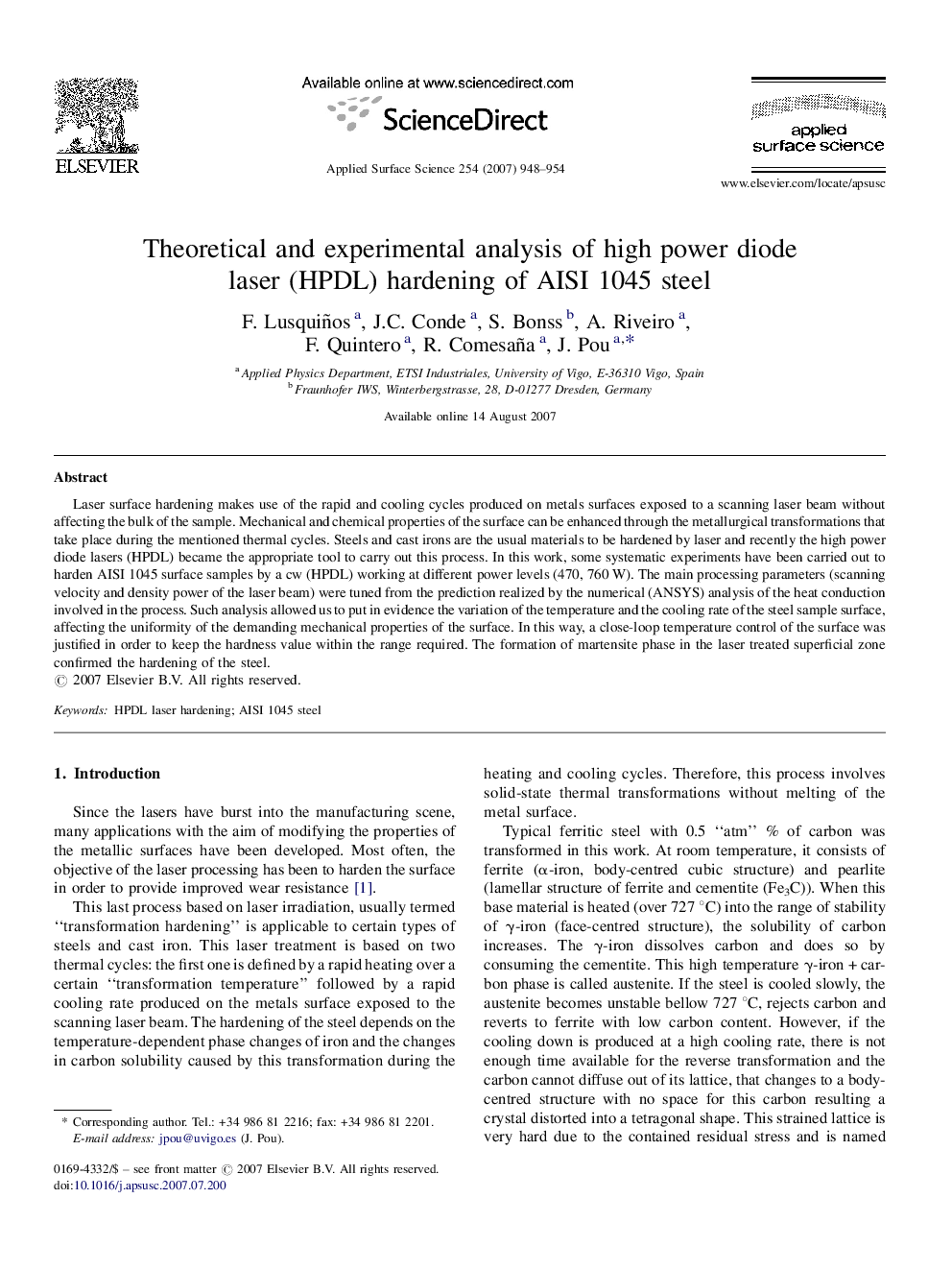| Article ID | Journal | Published Year | Pages | File Type |
|---|---|---|---|---|
| 5368149 | Applied Surface Science | 2007 | 7 Pages |
Laser surface hardening makes use of the rapid and cooling cycles produced on metals surfaces exposed to a scanning laser beam without affecting the bulk of the sample. Mechanical and chemical properties of the surface can be enhanced through the metallurgical transformations that take place during the mentioned thermal cycles. Steels and cast irons are the usual materials to be hardened by laser and recently the high power diode lasers (HPDL) became the appropriate tool to carry out this process. In this work, some systematic experiments have been carried out to harden AISI 1045 surface samples by a cw (HPDL) working at different power levels (470, 760Â W). The main processing parameters (scanning velocity and density power of the laser beam) were tuned from the prediction realized by the numerical (ANSYS) analysis of the heat conduction involved in the process. Such analysis allowed us to put in evidence the variation of the temperature and the cooling rate of the steel sample surface, affecting the uniformity of the demanding mechanical properties of the surface. In this way, a close-loop temperature control of the surface was justified in order to keep the hardness value within the range required. The formation of martensite phase in the laser treated superficial zone confirmed the hardening of the steel.
